This page may contain affiliate links. I receive a small commission at no cost to you when you make a purchase using my link. This post is about a fantastic Korean side dish called Bellflower Root Side Dish!
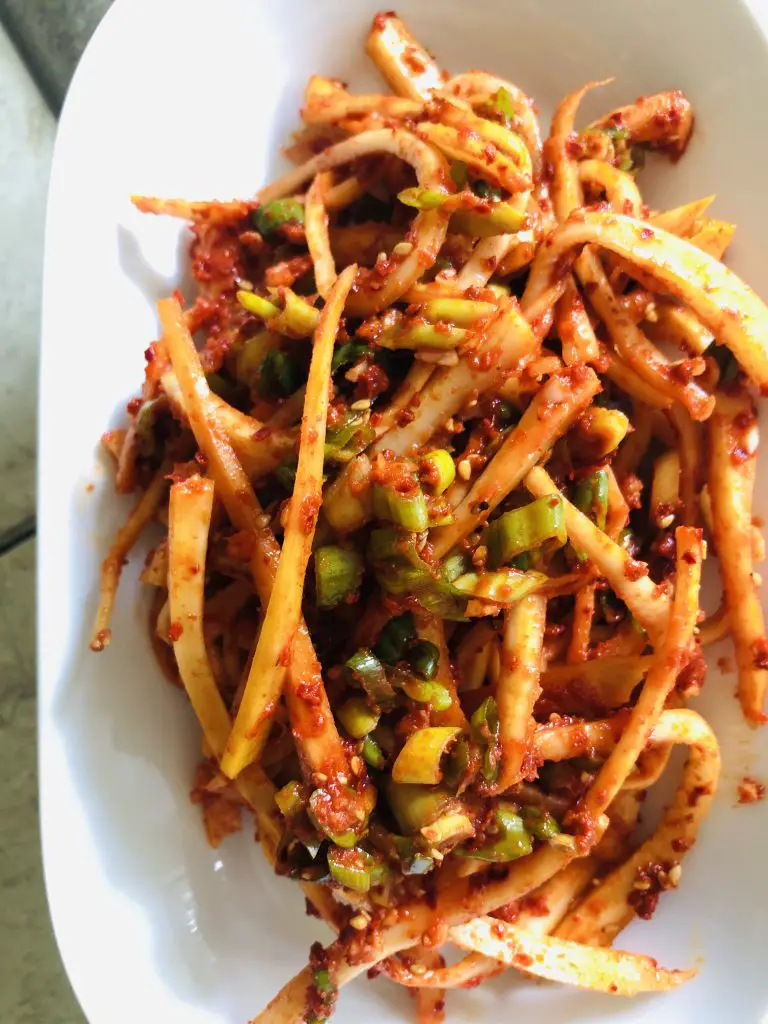
Hands up if you are excited by BANCHAN! I have 2 hands up way up and I hope hands are going up everywhere! 😊
Banchan are the side dishes served at Korean meals. One of the most popular Korean banchan is the Bellflower Root Side Dish aka Doraji Muchim.
The bellflower (or platycodon in English) grows wild in the mountains of Korea. Here, we spice up the root of the bellflower using the following ingredients:
Gochugaru (red pepper powder), gochujang (red pepper paste), garlic, scallions, sugar, sesame seeds, and rice vinegar.
I've included links to Amazon for some of the items above for convenience.
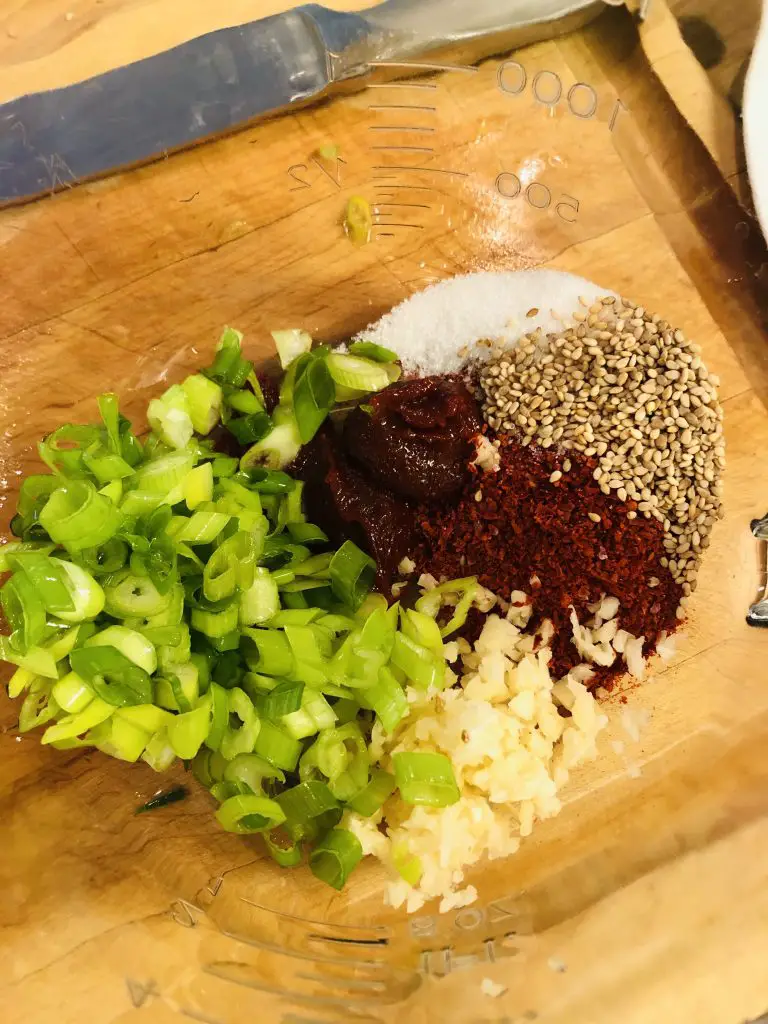
The Korean Bellflower
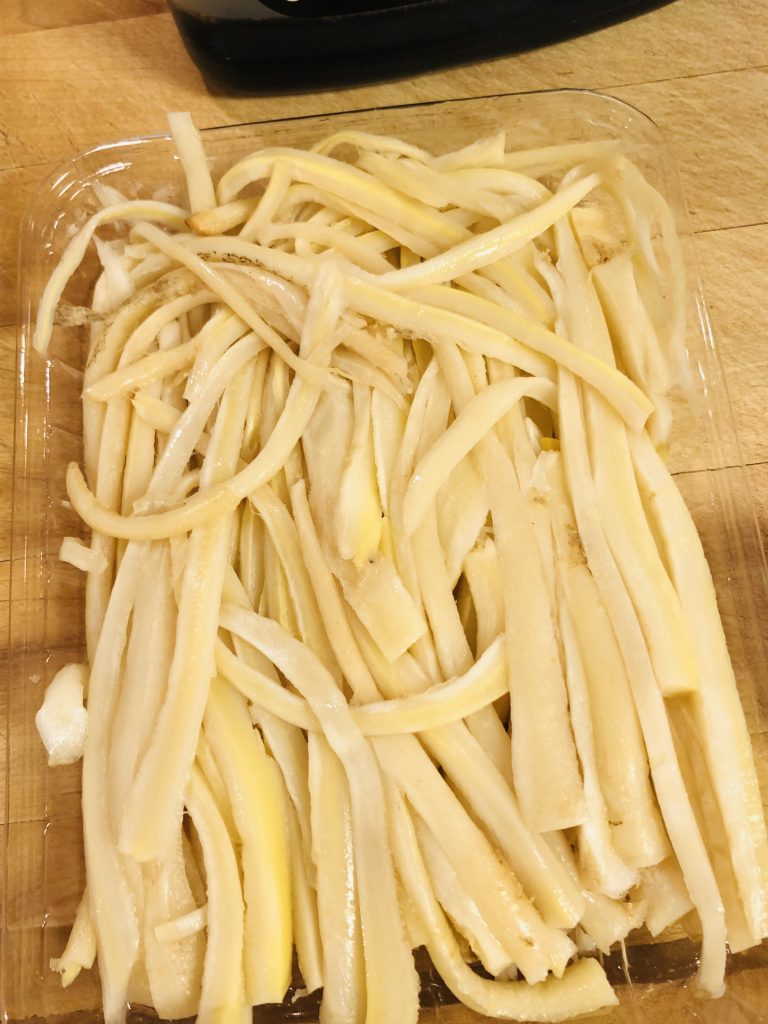
The Korean bellflower, or doraji as it is called in Korea, grows wild in the mountains and fields in Korea.
The root of the bellflower has many culinary uses in Korea. It is also used medicinally and is thought to have therapeutic and health maintaining benefits.
As far as culinary use goes, the doraji is very often used to make a namul, or seasoned vegetable dish, such as this Bellflower Root Side Dish.
Many people who love bibimbap, a Korean rice dish that includes lots of delicious namul, will recognize this particular side dish as a common addition to bibimbap!
Doraji Root
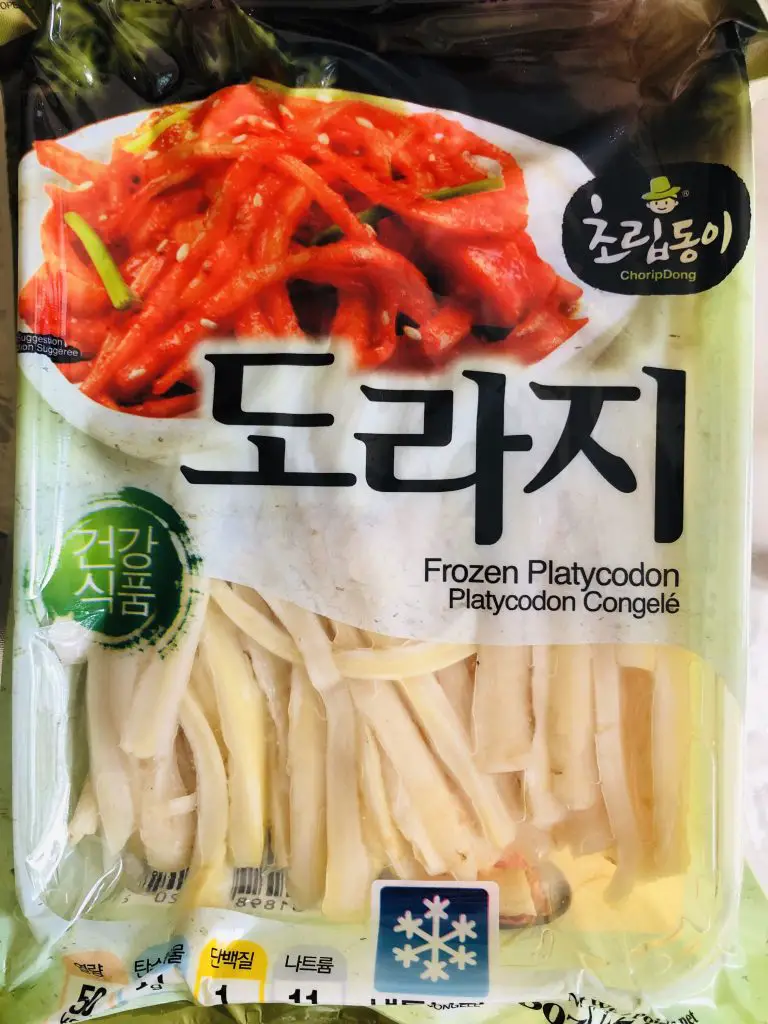
I bought a small pack of frozen platycodon, or doraji root, at my local Asian store. This was super easy to use, as it was already cut into pieces and all I had to do was defrost it overnight in my refrigerator and it was ready to go!
You can also buy dried doraji root. If you use dried doraji, you will need to soak the roots in water before using. If you are interested in ordering dried doraji root from Amazon, please click here.
Be sure to take the time to smell the bellflower root. It has a strong ginseng like aroma to it. You definitely want to experience this aspect of this food.
The Method To Make Bellflower Root Side Dish
This side dish is super duper easy to make! After defrosting the frozen bellflower root, you simply salt it for 5 minutes, rinse, and then squeeze out all the water. The salt helps to take some of the bitter taste of the doraji away.
Then after prepping your other ingredients (takes about 5 minutes!), you simply mix everything together by hand, and it is ready to eat!
Why Make Seasoned Bellflower Root Side Dish?
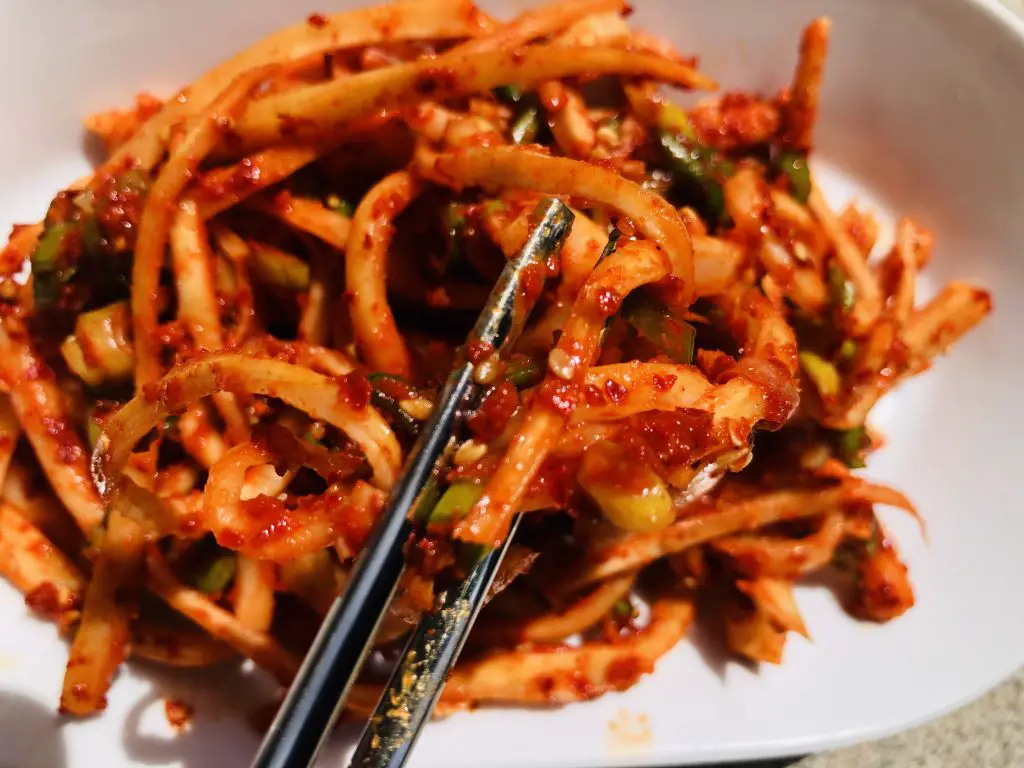
You will want to make this side dish because it's delicious and healthy! It is spicy due to using gochugaru and gochujang, and it has a super and satisfying CRUNCH to it!
It really is incredibly easy to make, and makes a great accompaniment to bibimbap, or any Korean dish!
I hope you will try this dish!!
Some Other Recipes You May Enjoy!

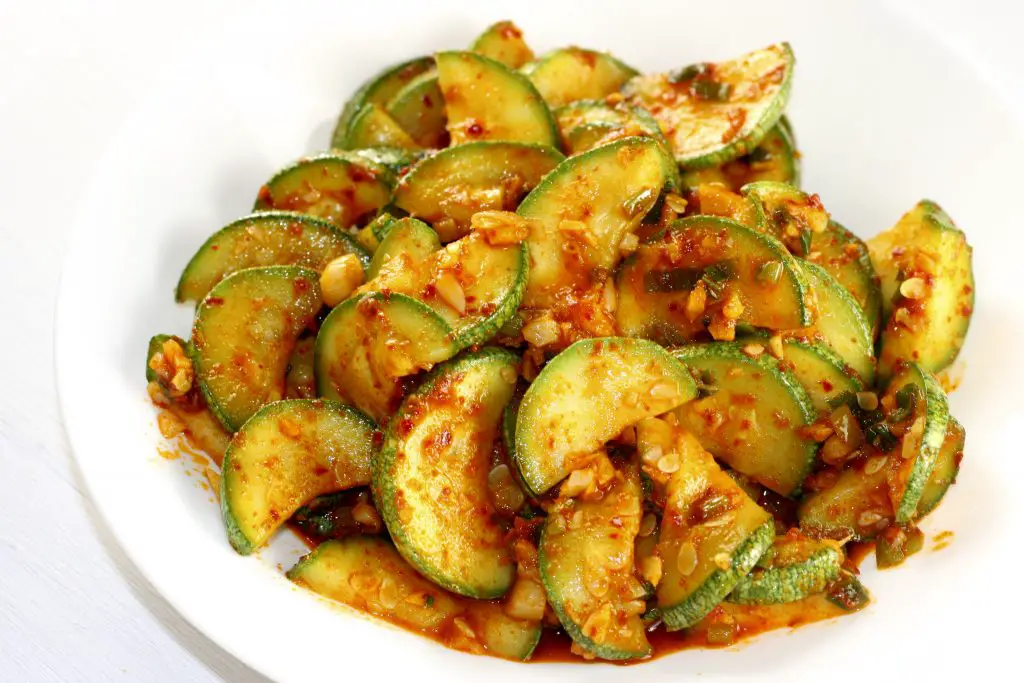
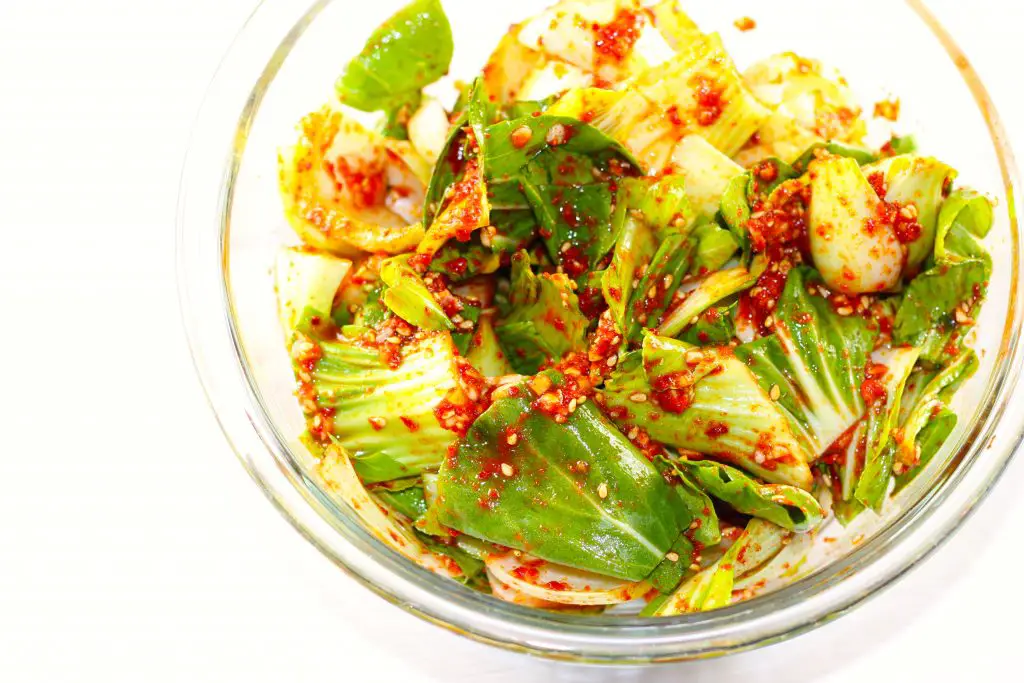
Please sign up to get the latest recipes and culinary inspiration! Also come along with me on the 1,000 Foods to Eat Journey by signing up here. 🙂
Cheers!
Grace
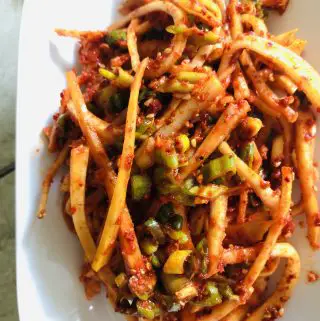
Bellflower Root Side Dish
Ingredients
- 8 oz bellflower I used frozen bellflower which I defrosted in my refrigerator overnight
- 1 ts salt
- 5 cloves garlic minced
- 2 green onions sliced thinly
- 2 tablespoon gochugaru (Korean red pepper powder)
- 2 ts gochujang (Korean red pepper paste)
- 1 ts sugar
- 1 ts roasted sesame seeds
- 1 tablespoon rice vinegar add slightly more if you like it more "saucy"
Instructions
- Defrost the bellflower in your fridge overnight. Remove the bellflower from the package and place in a small colander. Add 1 ts of salt and mix by hand so that salt covers as much of the roots as possible. Leave for 5 minutes.
- Prep your other ingredients (mince garlic and slice the green onions). Combine the minced garlic, green onions, sugar, gochugaru, gochujang, and roasted sesame seeds in a large mixing bowl.
- After 5 minutes, rinse the bellflower well. Use paper towels and squeeze the bellflower firmly to get rid of all excess water.
- Now combine! Add the bellflower to the other ingredients in the mixing bowl. Mix gently by hand until all the ingredients are incorporated. Last but not least, add around 1 tablespoon of the rice vinegar and then mix again to combine. If you would like this dish to be a bit "saucier," add additional rice vinegar a little at a time.

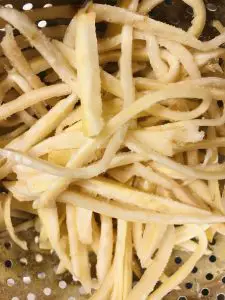
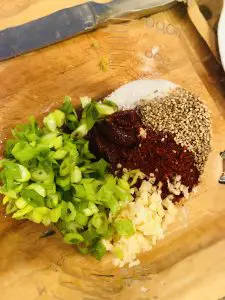
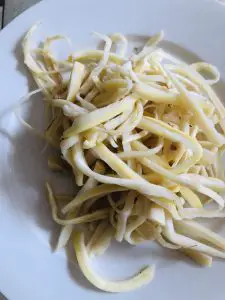
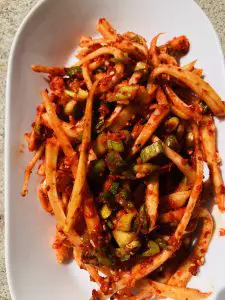
Leave a Reply